The tenth edition of the Central American Biennial has brought a wide selection of paintings, sculptures, installations, videos and music, as well as workshops from artists from throughout the region, to both San José and Limón this month.
Organized by Empresarios por el Arte, Cuban curator Tamara Díaz Bringas and general coordinator Nerina Carmona Castro, the event shares and showcases the thinking environment and creative production in Central America. The organizers also seek to acknowledge the artists’ varying contexts in order to create a collaborative alliance among them.
The artwork exhibited throughout the capital and the port city of Limón through the end of September shares a very humane theme: “Todas las vidas” (“All Lives”), designed as a statement of union among Central American countries. According to the event materials, the theme recognizes the common factors in national stories, including colonial periods, dependence and monoculture conditions, and encourages artists to question these topics so visitors can reflect upon them.
On a sunny morning, as ash fell on San José from Turrialba Volcano, The Tico Times visited three galleries and three museums around the capital.
Our first stop was the Spanish Cultural Center (CCE) located in Barrio Escalante, in front of the plaza known as El Farolito. The CCE is currently presenting work by Diego del Pozo Barriuso, of Spain, and the results of his collaboration with artists from Nicaragua and Costa Rica. The collaborators have presented a thematic work entitled “Tocar, no dominar” (“Touch, Don’t Dominate”), which uses installations, prints, video, and photography to portray the artists’ unease about the social, cultural and political construction of emotions such as hatred and fear.
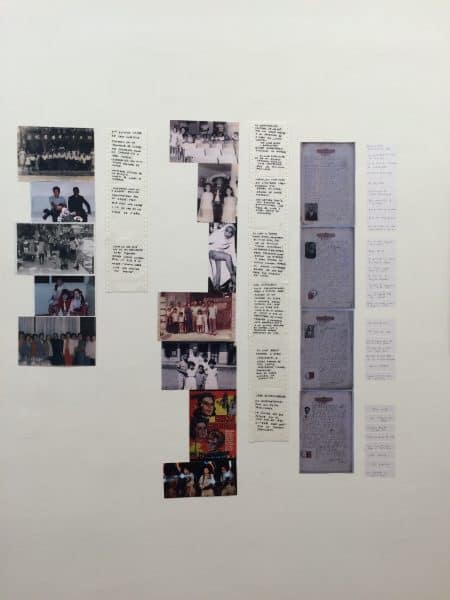
Our next stop was the Rafael Ángel Calderón Guardia Museum, also located in Barrio Escalante. The government of Costa Rica declared this a National Heritage Building in 1979, due to its architectonic value and the fact that the President Rafael Ángel Calderón Guardia lived there.
This house’s beauty makes a visit particularly pleasant. As you enter the house, its patterned floors, chandeliers and distinct architecture transport you to another era. As befits a historical site, the artwork presented at this museum for the Central American Biennial has a political and historical stance.
Here, artists from El Salvador, Honduras, Guatemala, Nicaragua, Panama, Panama and the United States are exhibiting pieces depicting the sociopolitical environment of their countries, most using photography. The use of vibrant colors creates contrast at various points of the exhibit.
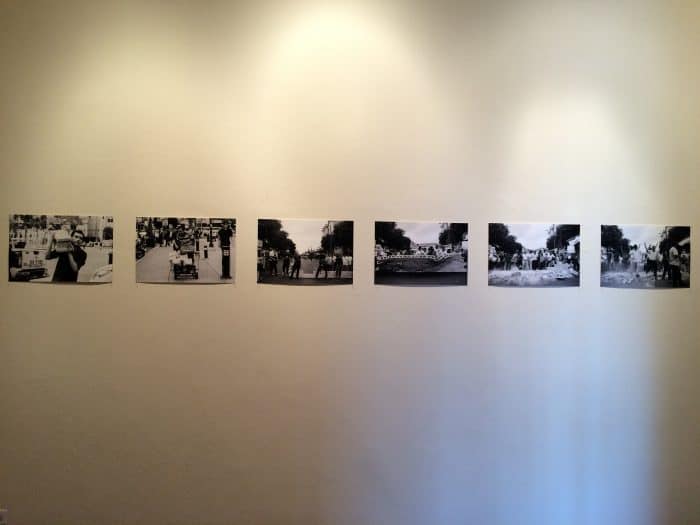
These vibrant contrasts also characterizied our next stop: Lado V, an extension of the renowned gallery TEOR/éTica, located in Barrio Amón. A collection entitle “La luchita continua” (“The Continuous Battle”) is divided within three rooms in Lado V. In the first room you’ll find the Nicaraguan editorial collective Artefacto/Malagana; in the second, the Costa Rican collective Kasandra, which communicates humor through political virulence and sexual irreverence; and in the third, the Guatemalan collective Bizarras, which creates literature and urban art.
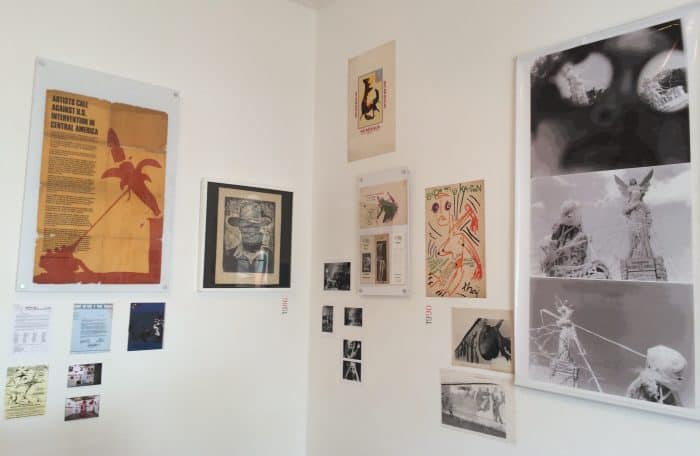
Halfway through our tour we crossed the street and went to TEOR/éTica, next to The Tico Times offices in Barrio Amón. The entire space is dedicated to the Nicaraguan artist Patricia Belli. Using installations, color pencils, and graphite, Belli explores the concept of portraying fragments of the human body such as its extremities, and the idea of what it means to have a body.
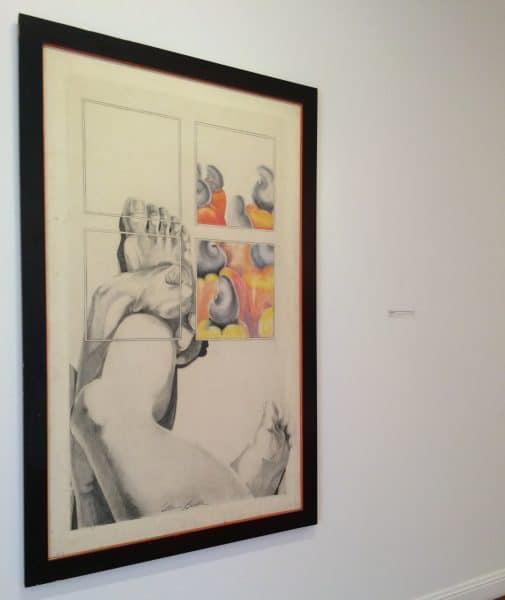
With the use of our lower extremities, we then walked to the Contemporary Art and Design Museum (MADC), located on Avenida 3, Calle 15 in the center of San José.
On the guided path through the museum, the MADC gathers a wide range of artists such as Andrea Aragón (Guatemala), Aparicio Arthola (Nicaragua), María Raquel Cochez (Panama), Celsa Flores (Honduras), Roberto Guerrero (Costa Rica), Anna Handick (Germany), the collective JELETON (Spain), Irene Kopelman (Argentina), Sandra Monterroso (Guatemala), Rachelle Mozman (United States) and Abigail Reyes (El Salvador), among others.
The work on display ranges from pieces with a more conceptual stance, using media including tin sheets, videos, sculptures, and typography; to explorations of sexuality using paint, collages, ink and sculpture; to photographic portraits.
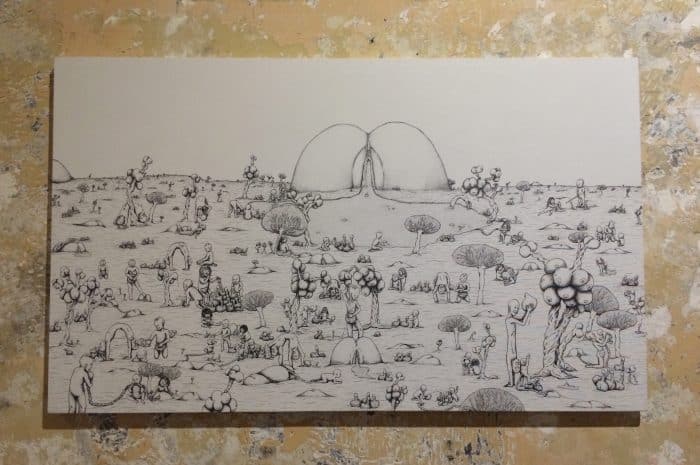
After our tour at the MADC, we walked one block toward the National Museum, another historical site located in the heart of San José. The old Bellavista Barracks has been restored to allow spectators get a glimpse into the dungeons, where the Biennial artwork is displayed.
Artists such as Alfredo Ceibal (Guatemala), Oswaldo de León Kantule (Panama), Rolando Castellón Alegría (Nicaragua), Paulina Velázquez (Mexico) and Stephanie Williams (Costa Rica) can be seen here. Most of the pieces explore natural themes using wood, paint, prints, collages, and graphite. A display on one of the museum’s walls tells a unique story you won’t want to miss out.
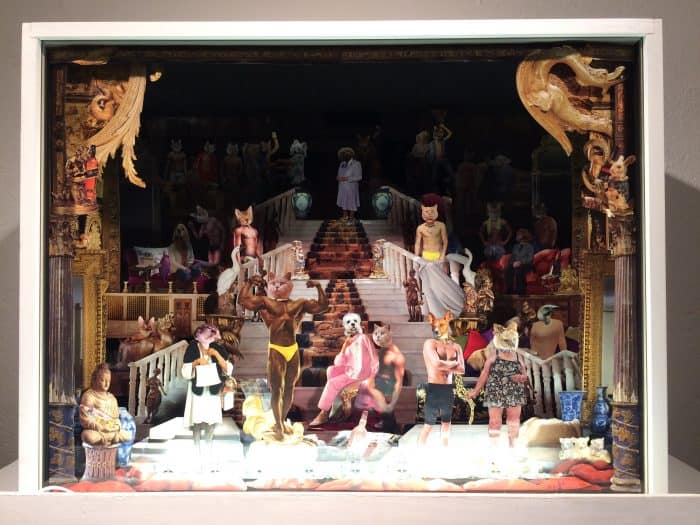
Central America offers diverse forms of expression, and the 10th Central American Biennial has managed to gather many of them in one event. It offers space for both artists and spectators to enjoy the cultural depiction that characterizes each country pertaining to Central America. It’s well worth a visit during the event’s final days.






